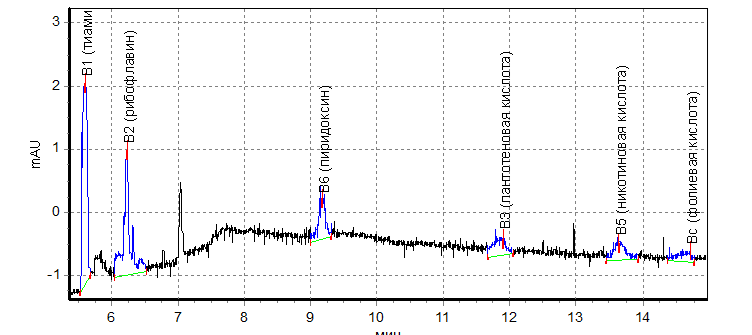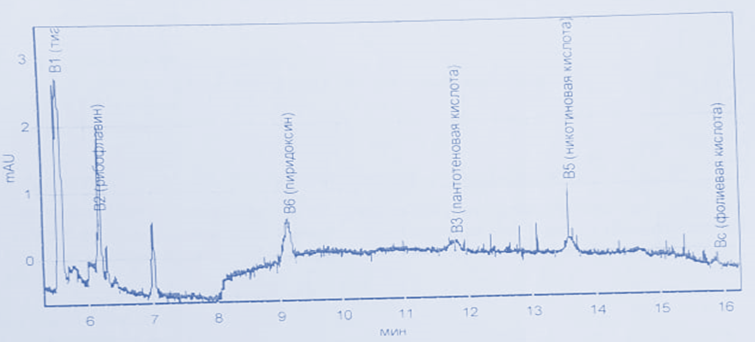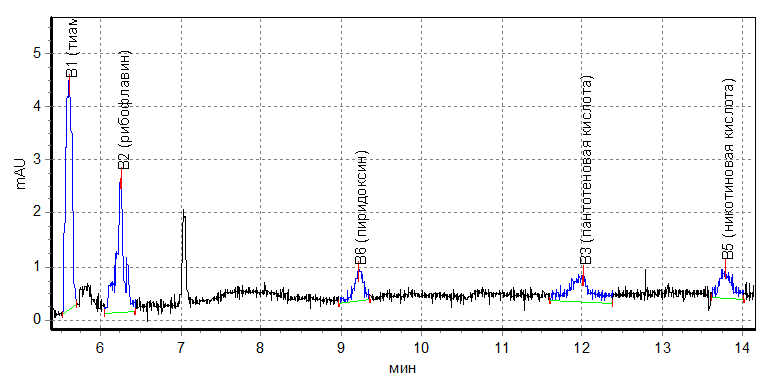The Effect of Goji Berries on the Nutritional Value of Camel Meat Prepared by Sous-vide Technology
The Effect of Goji Berries on the Nutritional Value of Camel Meat Prepared by Sous-vide Technology
Abstract
This article examines and discusses the effect of goji berries on the nutritional value of a camel meat product prepared using sous-vide technology. By adding vegetable raw materials, you can increase the nutritional value of the product. Using camel meat as a source of an unconventional resource. Also, cook with the help of sous-vide technology, which helps to preserve food qualities. The technology significantly affects the consistency of meat. Sous vide treatment allows you to preserve vitamins and minerals inside the product during heat treatment, which makes the product more nutritious. In the study, the physicochemical parameters of the product were determined: mass fractions of proteins, fats and carbohydrates. In addition, indicators of WHC, WBC, OHC, vitamin A (retinol) and vitamins group of «B» per 100 g of the product.
1. Introduction
Goji berries are the most valuable medicinal plant and contain a unique complex of vitamins, minerals, trace elements that slow down the aging process of the body, strengthen and support the nervous and immune systems, improve the general condition of the body, tone up, stimulate mental activity, vision and memory, reduce the feeling of fatigue.
Goji berries contribute to the normalization of blood pressure and circulation, regulate blood sugar levels, strengthen the cardiovascular system, improve digestion, liver and kidney function.
Vitamins that contain Goji berries: vitamin A, vitamins B1 and B2, vitamin PP and vitamin C.
According to Vardanyan that goji berries are better known as a useful product that promotes longevity, an excellent medicine for the cure of many diseases< cancer, heart attack, diabetes, obesity, fever, vision impairment, etc .
Using these berries, help the keep level of sugar and cholesterol in the blood, reduce fat deposits, bones, teeth are strengthened, normalized pressure, headaches pass, and toxins are eliminated from the body.
Such unique properties of goji berries are due to their chemical properties. It has been established that goji berries contain 38 amino acids (8 of them are essential), vitamins A, B, E, C (the content of vitamin C in GB is 522 times higher than its amount in an orange), more than 22 minerals (including calcium, potassium, zinc, iron, sodium, copper, manganese, magnesium, germanium, selenium, etc.), polysaccharides (LBP-1; 2; 3; 4), unsaturated fatty acids (omega-3,6), carotenoids, flavonoids, biologically active substances and other useful components .
In the work, Taeva goji berries were used as a brine for tenderizing whole-muscle meat products. The injection with the proposed brine is characterized by uniform saturation of meat pieces with brine, minimal draining of brine after injection and uniform distribution of salting substances inside the pieces. Due to the good indicators of vitamins E, A and B in the berry content and antioxidant properties, because of such processing, meat becomes more elastic, juicy during heat treatment, has tenderizing properties .
According to Asuman this study aimed to investigate the effects of supplementing diets with goji berry (Lycium barbarum L.) leaves (GBL) on performance, meat lipid oxidation, meat chemical composition, carcass traits, some internal organs, digestive tract parts, and some blood parameters in broiler chickens. A total of 144 d-old mixed-sex chicks (Ross-308) were weighed and randomly allocated to four experimental groups with three replicates of 12 chickens each. Treatments were as follows: (i) basal diet (control), (ii) basal diet+1 g/kg GBL, (iii) basal diet + 5 g/kg GBL, and (iv) basal diet+ 10 g/kg GBL. After analysis by one-way ANOVA, the results revealed that 10 g/kg GBL improved body weight (0-6 weeks) (p<0.01), body weight gain (4-6 weeks), and feed intake (4-6 and 0-6 weeks) (p<0.05). The feed conversion ratio did not significantly improve with GBL treatment (p>0.05). In addition, 10 g/kg GBL of the diet increased heart weight and proventriculus length (p<0.05), however, it decreased breast meat lipid oxidation on d 21 (p<0.05). Experimental treatments did not affect the total cholesterol, HDL, glucose, and triglycerides (p<0.05) but decreased LDL (p<0.05). In conclusion, supplementing 10 g/kg GBL to a broiler chicken diet may improve performance and decrease breast meat lipid oxidation and blood serum LDL .
According to Sharygina’s science research work, the use of natural antioxidants-extracts of spices and rosemary plants - will give positive results when storing pure fats, and allows you to stabilize the destruction of the lipid fraction of multicomponent products. At the same time, the biological value of the product increases due to the essential oils and bioflavonoids contained in the extracts: catechins and phenolic acids .
Also, camel hump fat was added for prototype No. 2 (F). The benefits of camel fat, its beneficial effect on the well-being and appearance of a person, are officially confirmed by nutritionists. It is not surprising, because the unique properties of fat deposits and a full supply of nutrients and trace elements allow camels to survive for a long time in the desert expanses without water and food. Prevention and treatment with animal fats is a fairly common phenomenon. Nowadays, people prefer to use fish, badger, bear, goose fats .
The lipids contained in them are able to keep the human body in constant tone. The food acquires a slightly specific, sweet taste, pleasant aroma, which gives it a certain piquancy. Moreover, such food will never become a factor in gaining excess weight, because camel fat is a dietary product .
The «Sous-vide» technique is now a modern method of cooking in vacuum with relatively low-temperature processing for a long time . After production, the packaged and cooked products are cooled in cold baths and stored.
According to Vaudagna and Wang, Baldwin , with the "sous – vide" method, products are heated slowly and evenly. When placed in a vacuum environment, they retain their aromatic composition and substances that determine their oxidative stability.
The «Sous-vide» treatment allows to obtain the meat which is more tender and more nutritious in case of not losing the mass of the weight, not losing the less mineral, decrease of vitamins. The method of preparing sous-vide differs from traditional cooking. Here, the products are packed in polyethylene containers and go through the packaging process in a vacuumcleaner, and then they are subjected to low – temperature heating, usually at low temperatures of 55-60 ° C, for a long time-72 hour , then rapid (shock) cooling is applied to increase the shelf life of the product.
According to other studies by Church and Parsons , the use of the "sous-vide" method provides higher quality meat products, such as juiciness, fragility, taste, and much more. Sous vide treatment allows preservation of vitamins and minerals inside the product during heat treatment, which makes the product more nutritious . The sous vide system leads to a higher yield and better texture of meat products, in particular those made from beef, compared to traditional processing .
The aim of the study was the effectgoji berries on the nutritional value of camel meat prepared by sous-vide technology.
2. Materials and methods
For an experiment, the meat of a double-horned camel was taken. The suppliers are the Kazakh agro-enterprise "Daulet-Beket" for the flagship camel milk restaurant-store. Frozen flank part of camel was used, 19℃. The meat was cut into 2 cm slices, one for the control sample without additives. Camel meat in brine was used for the prototype. To create a brine composition, goji berries and rosemary were crushed, poured with boiled water and allowed to infuse the brine for 2 days. The samples were evacuated in a vacuum packer FOODATLAS ECO DZ-400/2SC in a special bag. Cooking time in the STEBA sous-vide machine is 3 hours at a temperature of 70℃.
Goji berries were taken in the full form of berries, later crushed to powder, and rosemary in powder form. The chemical composition of rosemary includes a lot of healthy substances that make this plant indispensable in folk recipes and in pharmacology: vitamins A, C, group B; calcium; potassium; phosphorus; magnesium; sodium; iron . The beneficial effect of rosemary on the human body has long been no secret to anyone. It is regularly used for: protection of vessel walls; accelerating the healing of wounds and abrasions; improving immunity; fighting fungi and staphylococcus; normalization of the cardiovascular system; improving blood circulation; relief of pain in muscles and joints; acceleration of digestion; improving performance; stress relief and overstrain; improving the condition of the skin and hair .
Camel fat is used for the following purposes:
– To strengthen weakened immunity, increase the protective barrier of the whole body;
– As a preventive agent that suppresses the growth and development of cancer cells;
– As a strong aphrodisiac that increases the potency of men, female sex drive;
– Preventive, therapeutic agent for diabetes mellitus;
– Fight against diseases that are chronic in nature;
– To improve the digestive process, stimulate the proper functioning of the intestine;
– With cough, bronchitis, fever, inflammatory processes of a different nature.
Its use is recommended for children, old people to replenish their energy reserves. The product is easily digested, guaranteeing a quick return of nutrients to the human body .
The rationale for choosing camel meat is to use non-traditional raw materials due to the lack of domestic resources.
Also, the indicators of WHS, WBC, OHC were determined. The most important functional properties of meat raw materials include its ability to bind water, to moisture-retain, oil holding capacity of meat, juiciness, tenderness .
In the course of the study, analyses were carried out to determine the nutritional value indicators of the control and experimental samples in the "Research Institute of Food Safety" University of ATU.
Physical and chemical parameters were determined:
– The mass fraction of protein was according to GOST 25011-2017;
– The mass fraction of fat was according to GOST 23042-2015;
– The mass fraction of carbohydrates was determined by the Permanganatometrically method.
– The indicators of WHS were according to method of Vartanyan;
– The indicators of WBC were according to method of Grau – hamm;
– The indicators of OHC were according to method of Refractometrically method.
– The index of vitamin A (retinol) was according to GOST R 54635-2011;
– The index of water-soluble vitamins (Group of B) according to M-04-41-2005.
In Figure 1, 2, 3 the vitamin content index were determined by calculating the absolute calibration. The test was carried out under the following conditions: temperature-21 ° C, humidity-61%. The analysis temperature is 30 °C. The graph data is presented in the form of a table, (see Table 2).
3. Key results
Experimental samples and control samples of lumpy products from camel meat were studied (see Table. 1).
Camel meat with the addition of Goji berries was taken as a prototype. Goji berry and rosemary brine was added as a plant raw material to keep the high nutritious. The addition of rosemary to the meat, filling the dish with a pleasant aroma and softening the taste of the meat.
Table 1 - The result of a physical and chemical study
Name of indicators, units of measurement | Actual results | ||
C | B | F | |
Physical and chemical indicators: | |||
- mass fraction of protein, % | 11.79 | 17.76 | 21.23 |
- mass fraction of fat, % | 21.23 | 7.48 | 16.60 |
- mass fraction of carbohydrates, % | 0.41±0.002 | 1.03±0.005 | 1.03±0.005 |
- WHC, % | 72.5 | 75.3 | 70.18 |
- WBC, % | 74.3 | 77.6 | 73.1 |
- OHC, % | 65.12 | 67.10 | 66.34 |
Vitamins, mg / 100 g: | |||
-A, mg / 100 g | Not detected | 9.72 | 7,25 |
Also, the result of the control sample shows that in terms of the content of physical and chemical indicators, the data on the ratio of the mass fraction of protein is less than the experimental sample – 11.79%. The mass fraction of fat ore is much higher than that of the prototype, 3 times – 21.23%. There is a reduced mass fraction of carbohydrate – 0.41% see Table 1. In the table 1 also presented the indicators of WHC, WBC, OHC. These indicators are significantly higher in the sample, that is, in the experimental sample with goji berries and rosemary. It should be particularly noted that the research sample with goji berry is particularly rich in vitamin A.
The index of water-soluble vitamins (Group of B) according to M-04-41-2005.
The test was carried out at temperaturese-21 ° C, at humidity - 61%. Analysis temperature 30 °C, method of calculation of absolute calibration and absolute graduation, see Table 2.
Table 2 - Determination of the series of vitamin composition series
№ | Component | Conc., mg//100 g | ||
C | B | F | ||
1 | B1 (thiaminechloride) | 0,163±0,033 | 0,164±0,033 | 0,264±0,053 |
2 | B2 (riboflavin) | 0,089±0,037 | 0,097±0,041 | 0,151±0,063 |
3 | B6 (pyridoxine) | 0,035±0,007 | 0,029±0,006 | 0.032±0.006 |
4 | B3 (pantothenic acid) | 0,050±0,010 | 0,073±0,015 | 0,227±0,045 |
5 | B5 (nicotinic acid) | 0,015±0,003 | 0.020±0.004 | 0.035±0.006 |
6 | Bc (folic acid) | 0.002±0.0004 | 0,006±0,001 | - |

Figure 1 - Chromatography of the vitamin content indicator in the experimental sample

Figure 2 - Chromatography of the vitamin composition index for the control sample

Figure 3 - Indicator of the vitamin content in the product
4. Conclusion
The goji berries can increase a protein content of the camel meat under sous-vide method. The result of the first prototype contains less fat compared to the control and experimental samples with hump fat. According to the carbohydrate component indicators, the prototypes with goji berry and with hump fat have the same indicators, which is slightly higher than the indicator of the control sample. The indicators of WHC, WBC, OHC are significantly higher in the sample, that is, in the experimental sample with goji berries and rosemary. According to vitamin indicators, the addition of goji berries and rosemary made it possible to detect vitamin A as well as vitamins of the group B in a much larger amount. The addition of goji berries and rosemary increases the nutritional indicators of the product, and the method of preparation of sous-vide technology helps to preserve the nutritional qualities of the product.
